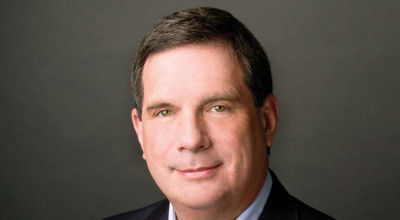
Predicting is as much of an art as it is a science. And if any prognosticator is honest, he or she will tell you that they don’t always get it right. I know. I certainly don’t always get it right.
But I don’t pull my predictions out of thin air. To the contrary, each of them has a reasonable explanation. For these seven predictions, I gleaned from several sources:
- Data-based research, particularly LifeWay Research.
- Trends that are already underway and gaining momentum.
- Conversations with hundreds of church leaders.
- My own experiences, based on 25 years of consulting and research of American congregations.
This year I am adding a new feature, a confidence factor. For example, if I said I had 100 percent confidence that a prediction would become reality, it would mean that I have absolutely no doubt about it. None of these predictions have a 100 percent confidence factor. But none of them fall below 70 percent either. That means I have a fairly high level of certainty about each of these trends.
The order of the trends is random. They are not ranked in any particular priority. I actually have 14—I will share the other seven in the near future.
1. Increased church acquisitions. Smaller churches will seek to be acquired by larger churches in increasing numbers. One of the big factors is simply personnel cost. Many smaller churches can no longer afford to pay a pastor a salary and benefits, particularly health care benefits (75 percent confidence factor).
2. Downsizing of denominational structures. Many denominational structures are becoming smaller because their churches are declining. Others are feeling economic pinches. This trend of smaller and more efficient denominational structures at all levels will only become more pervasive in 2014 (90 percent).
3. Decline in conversion growth. American churches that grow are more likely to get their growth at the expense of other churches. Evangelism is waning in many churches, and fewer non-believers are becoming Christians. The negative reaction to programmatic evangelistic methods has evolved into an overreaction. Too few churches emphasize personal and church-based evangelism (75 percent).
4. More megachurches. The data are clear that there are more megachurches (average worship attendance of 2,000 or more) today than a year ago. There is also little doubt the trend will continue. The only uncertainty is whether or not the rate of growth of megachurches will continue to climb (85 percent).
5. Greater number of churches moving to a unified worship style. For years a noticeable trend was churches offering different worship styles. The most common was the offering of two services: traditional and contemporary, though the definitions of each were elusive. In the next year we will we see a reversal of that trend, as many of those same churches decide to move to one common worship style (70 percent).
6. Increased emphasis on high-expectation church membership. For decades American congregations as a whole lowered their expectations of church membership. One could be on a church roll in many churches and not even attend worship services for years. We will see a gradual reversal of that trend in 2014 as more churches move to higher-expectation membership (70 percent).
7. Increased challenges for congregations to build and acquire land due to restrictive governmental policies. American churches will experience more frustration with governmental authorities as they seek to expand, build, and acquire land. Part of the reason will be due to the authorities’ concern about traffic and congestions. Another part is the underlying concern of losing a property tax base to a nonprofit organization. In a few cases there will be outright animosity and prejudice against Christians and churches. (80 percent)
I would love to get your feedback on these first seven trends and the ones to follow.
Thom S. Rainer is president of LifeWay Christian Resources. For the original article, visit thomrainer.com.
Get Spirit-filled content delivered right to your inbox! Click here to subscribe to our newsletter.
Dr. Mark Rutland's
National Institute of Christian Leadership (NICL)
The NICL is one of the top leadership training programs in the U.S. taught by Dr. Mark Rutland. If you're the type of leader that likes to have total control over every aspect of your ministry and your future success, the NICL is right for you!
FREE NICL MINI-COURSE - Enroll for 3-hours of training from Dr. Rutland's full leadership course. Experience the NICL and decide if this training is right for you and your team.
Do you feel stuck? Do you feel like you’re not growing? Do you need help from an expert in leadership? There is no other leadership training like the NICL. Gain the leadership skills and confidence you need to lead your church, business or ministry. Get ready to accomplish all of your God-given dreams. CLICK HERE for NICL training dates and details.The NICL Online is an option for any leader with time or schedule constraints. It's also for leaders who want to expedite their training to receive advanced standing for Master Level credit hours. Work through Dr. Rutland's full training from the comfort of your home or ministry at your pace. Learn more about NICL Online. Learn more about NICL Online.


